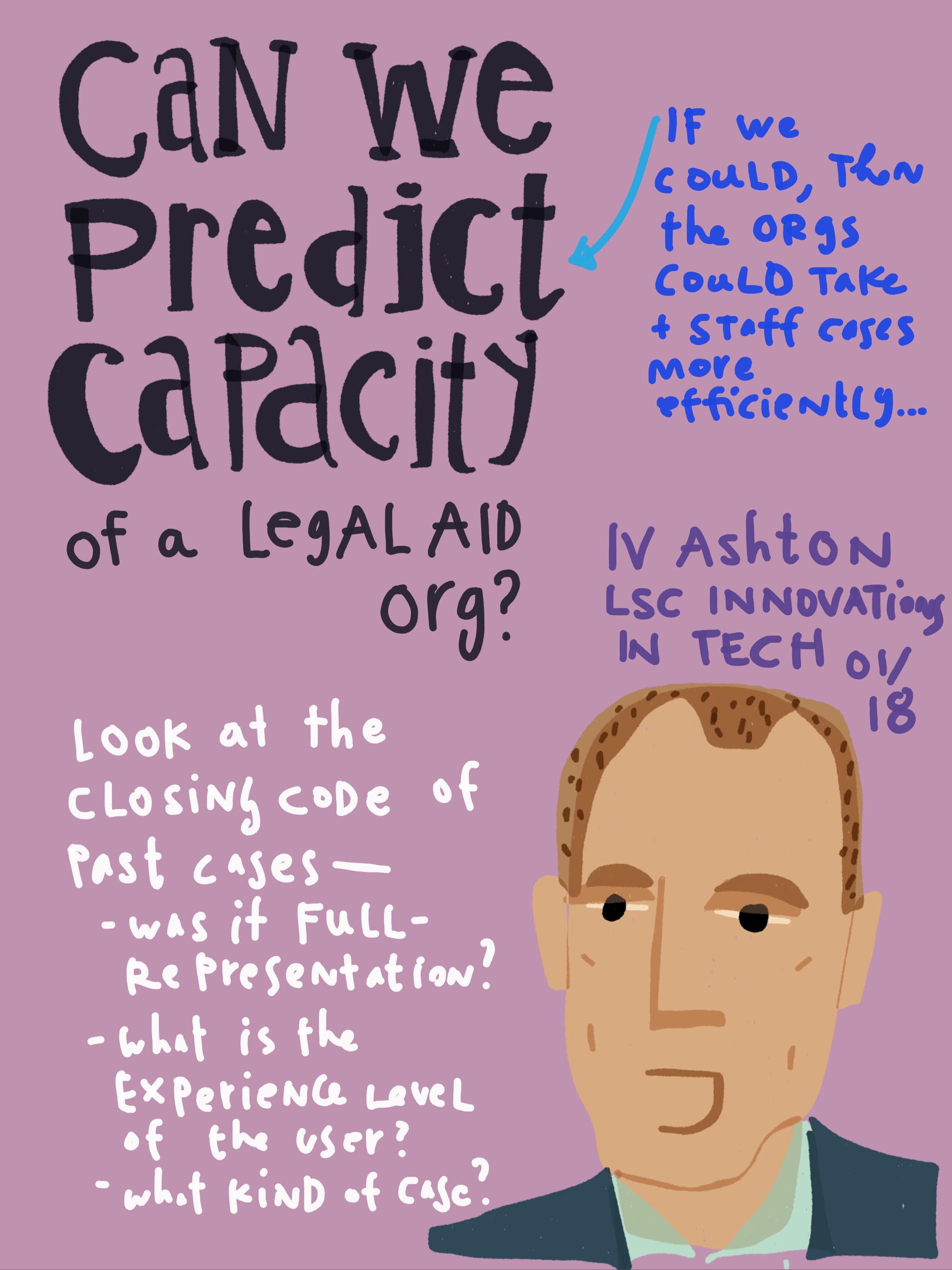Over the past month, I’ve been doing a series of interviews with all kinds of people working in legal innovation. Some are focused on visualizing law, others on inventing new ways to we serve clients in need of legal help, others on bringing technology into legal aid groups and courts.
These interviews are in part a scouting mission for me, to see what some of the emergent patterns are when it comes to change in the legal industry. I am going to be writing more on this topic, with case studies and testing of hypotheses. So in these conversations, I’m trying to understand the innovators’ trajectories — how they got to be doing what they’re doing, what their agenda is (and has been), and how they’ve negotiated the politics of bringing change to the legal profession.
I’ll be writing more with summaries of these interviews, as well as general write-ups of the key takeaways that I’m learning. One of the main points that has arisen over & again in these conversations is where is a good incubator for legal innovations? What kind of organization or context fosters the right mix of inspiration, experimentation, and scaling that allows new ideas to bubble up and flourish?
One of the hypotheses that’s emerged from the conversations is that the law school can be one of the main sites for incubating innovation. I know already that there will be strong points both to support this hypothesis and to counter it. Here’s a shortlist of these points, as derived from my interviews & reading (as well as my own experiences) so far:
Law schools can be good innovation incubators:
- Protective Cover: Law schools can give free space to let an instructor, student, or other affiliate try out new things without having to justify it immediately as profitable or connected to a short-term purpose.
- Cross-Pollination: The university setting allows for cross-department collaborations, bringing in other disciplines that can enhance the new projects being launched.
- Incentive to be ‘cutting edge’: Law schools want to be seen as forerunners, differentiating themselves from competing schools, proving to students that they will be prepared for the near future, and showing alumni that the school is embarking on exciting new projects worthy of support. This push can lead to support for groups of innovators who have formed projects, especially those that can be packaged into compelling stories & framed as ‘cutting edge’.
- Student body support: having students as a key group of stakeholders in the university will generally support anyone working on innovation, because there are likely to be a strong number of the students who will take part in the experiments & projects — and then become vocal supporters of them. This embrace by students, who have a strong interest in new techniques & topics that will prepare them for the changing industry (as well as to contrast with the standard law school experience they’ve had), can help the innovators justify more support, more budget, and more protective cover from any critics.
Law schools aren’t necessarily the best incubator:
- Only the powerful: A potential innovator in the law school needs to have fairly substantial institutional capital to get free space to experiment — if they don’t have this, they won’t be able to get an initial protective cover to try things out.
- Slowness to spread: Even if a good idea is sparked and developed by a small group in the law school, it can be difficult to get others in the school (or beyond it) to adopt this new practice — and often the group who’s developed it doesn’t have the bandwidth, training, or incentives to try to scale their innovation.
- Dependency on the leadership: Good ideas may easily bubble up in the law school setting, but for them to truly grow into proper initiatives — having an effect on the legal sector, or even just on the training of the students at the school — there needs to be strong top-down support from the school’s leadership. Without this commitment to innovation, and willingness to give budgets and positions to support good ideas, the ideas are likely to die quickly or migrate out to better incubators.
- The Faculty Factor: Pressures from faculty who consider law schools mainly there to serve traditional legal scholarship — rather than innovations in legal practice — can threaten the law school’s incubator potential. People in the law school who are focused on innovating practice can be relegated to hinterlands of the school, with less budget, less staffing, and lower positioning in the school’s hierarchy.
Now that I’ve identified these points & counter-points on innovation & law schools, I’m going to do some more reading & research to examine them rigorously. Along with more interviews specifically on this point, I’m also considering putting together a survey to send out to various people in law schools to hear their thoughts on these points.
In the meantime, if you have thoughts or reading suggestions on the topic — please send them along! I am thinking a lot on this topic, and would be very happy to have other people to talk with about it.




3 Comments
A couple of random thoughts on this:
I’m not sure if there are really any examples of law schools as successful incubators yet. (Just to be clear, I don’t count column inches alone as a success metric. Funded startups is where I would draw the line, at least.) I guess globally Stanford comes closest, certainly if we consider the number of advanced legal tech startups, but I’m not sure about the law school’s role in that.
Then again, enabling innovation is a difficult game, and I’m not sure if it even makes sense for law schools to be really active in that. Looking beyond law, we’ve got two striking examples of this here in Helsinki. One is the organically grown bottom-up community around the Aalto University (Stanfordian tech+biz+design amalgamation) with AaltoES, the Startup Sauna incubator and the Slush startup conference (one of the biggest in Europe). The other is the top-down meh created by bureaucratical fiat and tons of money from the university budget (because any self-respecting university has to have something like this these days) around the (traditional Humboldtian) University of Helsinki. In terms of VC funding I’m sure the Aalto folks lead by something like two orders of magnitude.
One general problem with technology transfer from academia to business is that too often it is driven by the availability of existing research in whatever researchers happen to consider interesting and groundbreaking and all that, and not often enough driven by actual needs on the market. This leads to the situation that you typically have solutions looking for problems, not the other way around. Usually these things then burn through whatever available funding for a year or two before realizing that nobody wants to buy it. I guess most law schools at least don’t have this problem, because they don’t tend to have anything that looks like a tehcnological solution, but rather focus on more general readiness to innovation.
(For what it’s worth, I will consider my own Intro to Legal Tech course (starting next week!) a success in this respect if it creates even just one legal startup within, dunno, 5 years.)
An incubator is an institution that needs ongoing support. While I agree with the downsides you identify with law schools, the question remains: Where will the necessary support come from to create a significant number of viable incubators outside of the law school context? The Chicago-based Justice Entrepreneurs Project — which you’ve profiled in the past; I’m on the Steering Committee — has been extremely fortunate to have an institutional home at The Chicago Bar Foundation. The CBF has the vision to recognize that creating new private-sector models is a key part of the whole access-to-justice enterprise. But as a general matter incubators may have a hard time finding charitable contributions, especially when competing with traditional legal aid programs. Creating revenue streams to make the incubator self-sustaining might (might!) be possible over time, but where would the start-up capital come from? From a practical standpoint, I don’t see many alternatives to institutionalizing most incubators in law schools — hopefully making them a central part of the experience in forward-looking institutions, as happened with clinical programs.
[…] At Open Law Lab, Margaret Hagan’s posting on whether law schools can be effective innovation incubators. […]